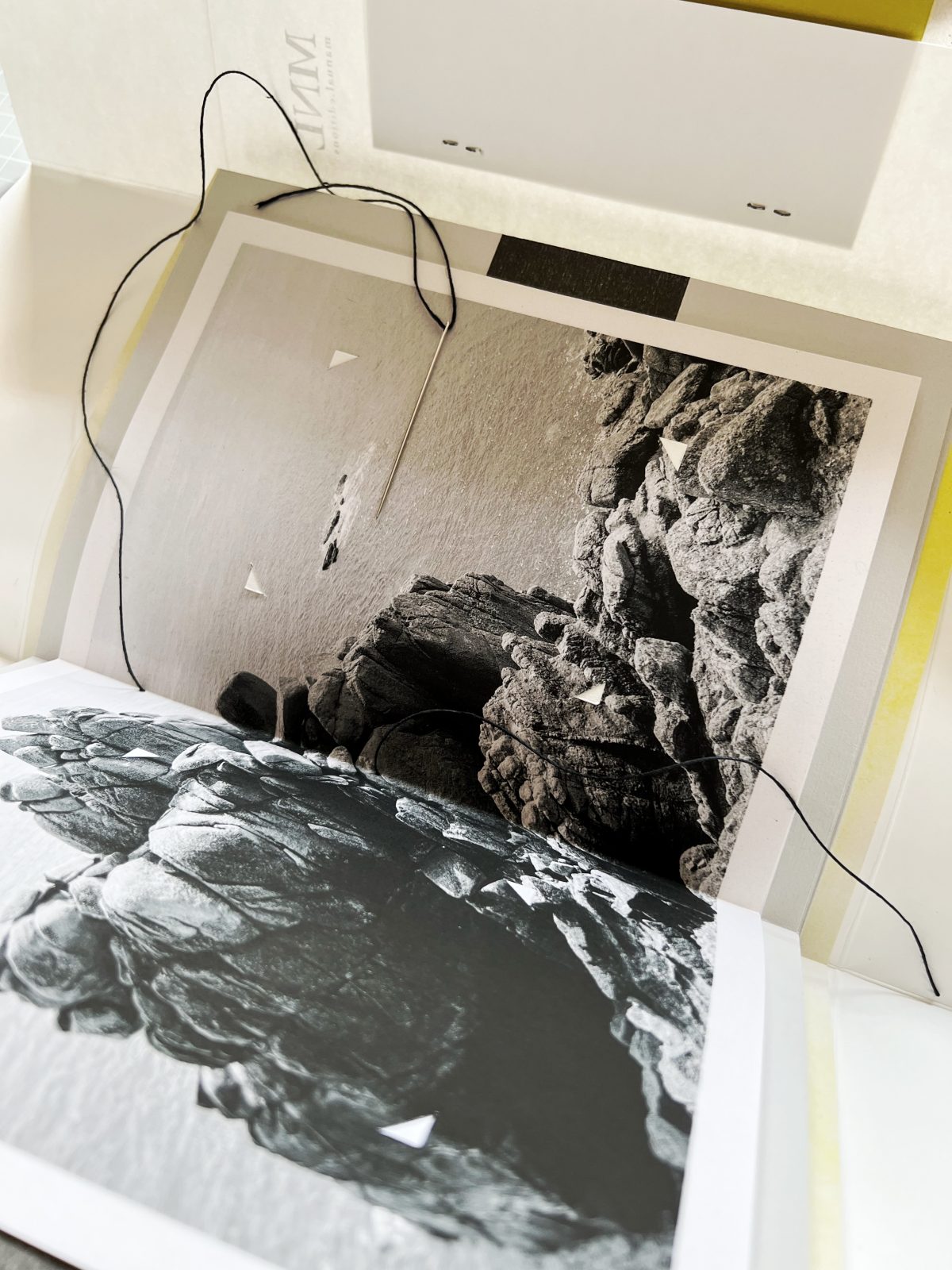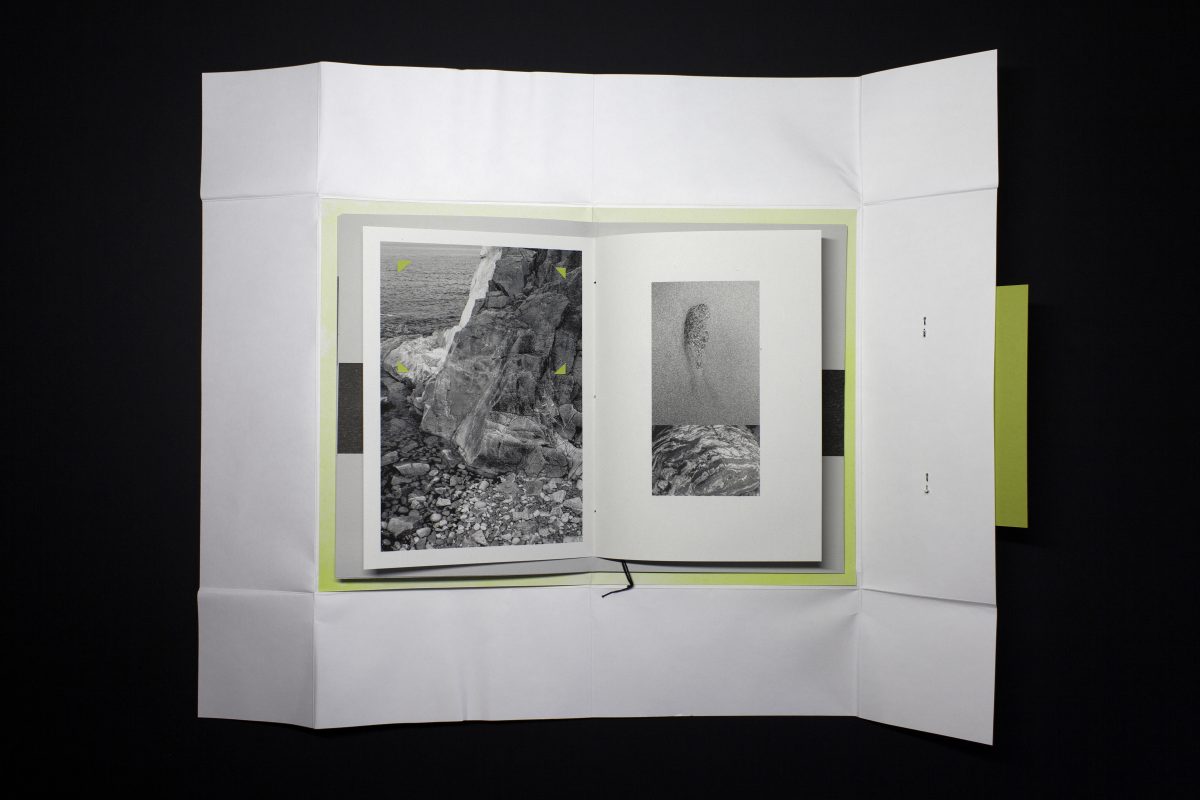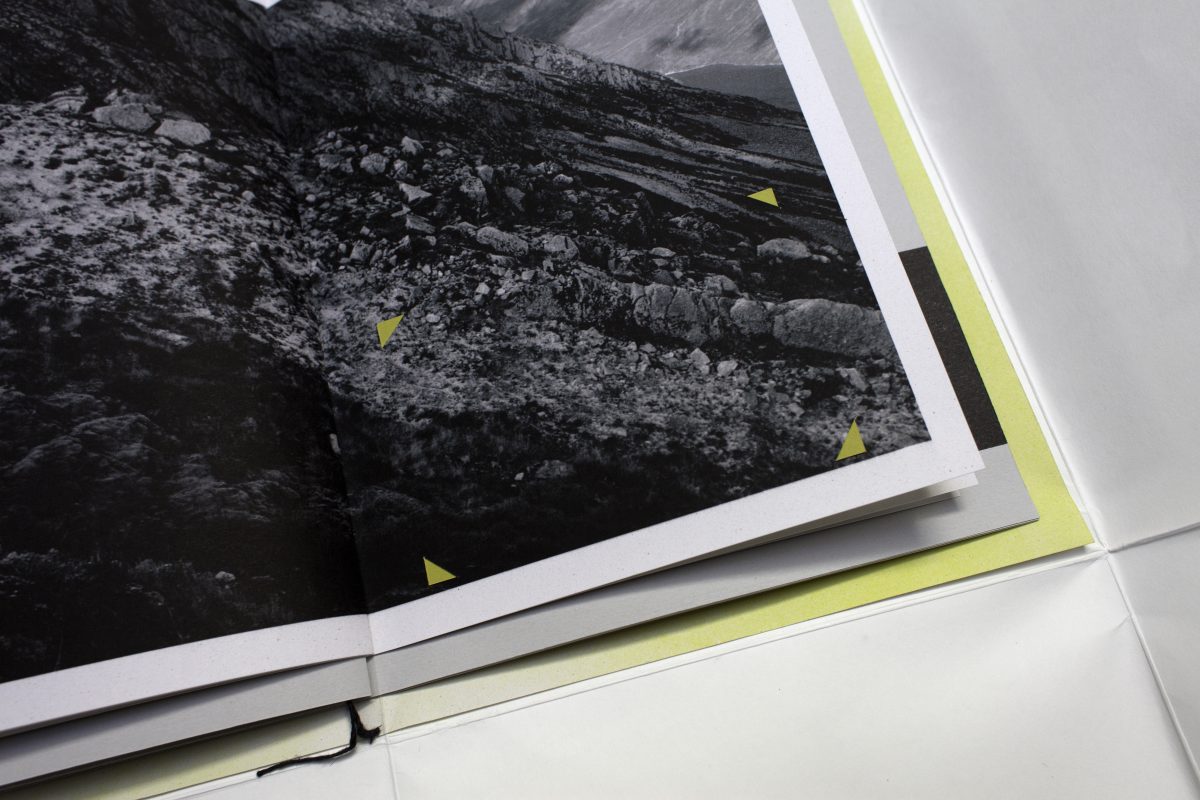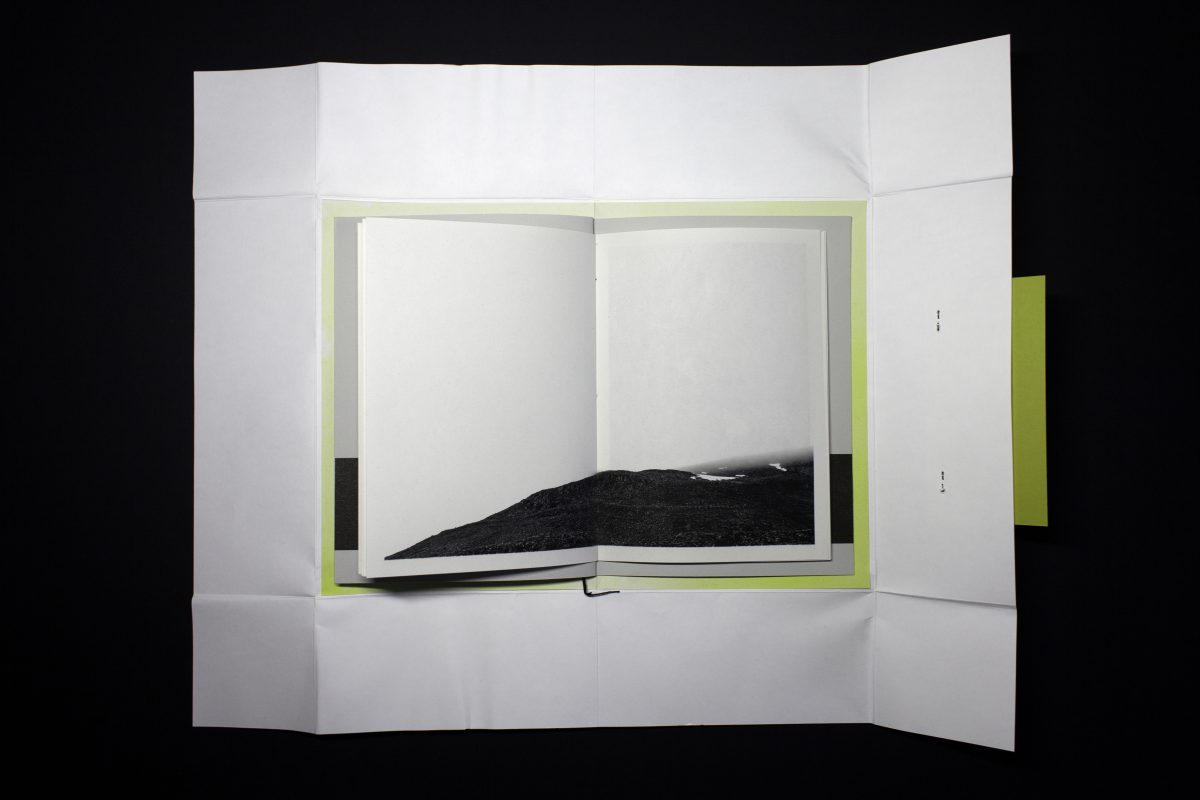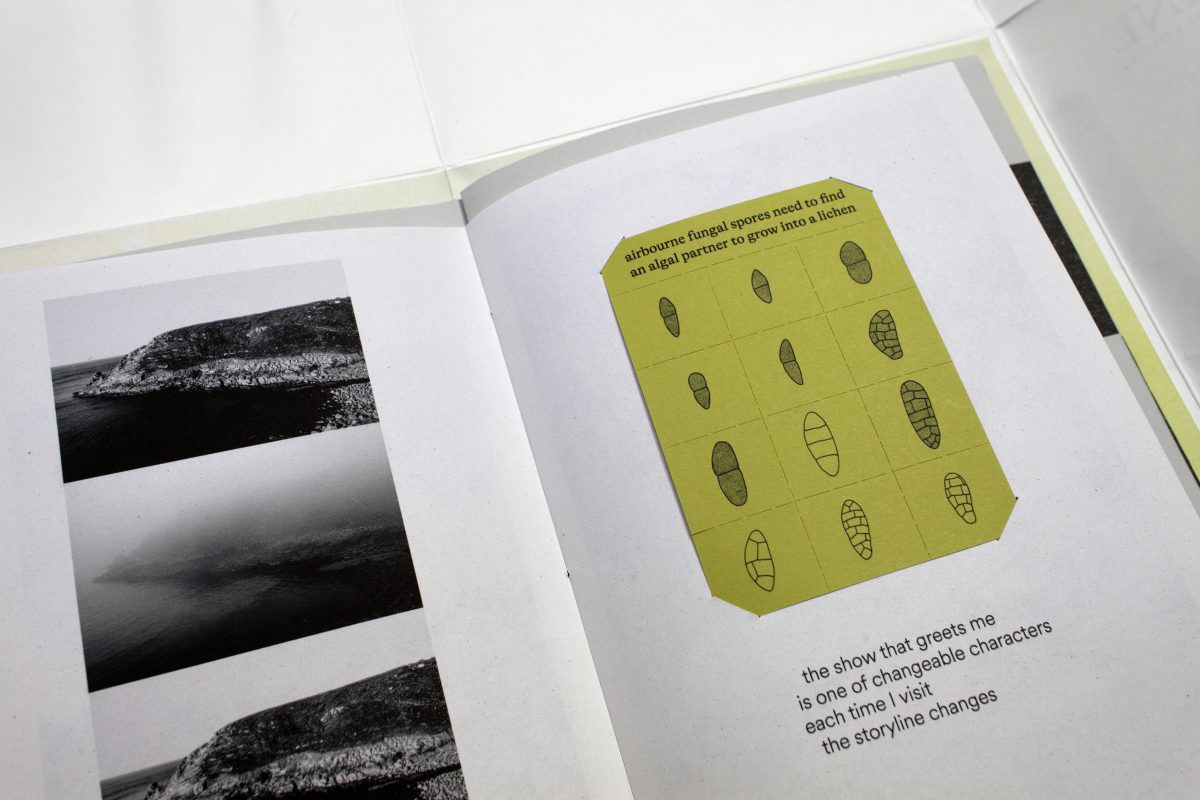Written by Tamsin Green
This book review follows the format of the Sustainable Photobook Publishing (SPP) network Case Study features. These features provide insights into the design, making and distribution of individual photobooks. More Case Studies by international artists and publishers can be found here.
WALKING OUT OF SLEEP: encounters with lichen territory
Tamsin Green
(manual.editions: 2023)
a book of multiple layers, that reflect the organism and the environmental conditions that they require to survive; a book of multiple encounters, from the controlled conditions of the herbarium, to wild wanderings; a book that can be read from multiple directions, or viewpoints, starting with science or experience.
The book explores one woman’s relationship with Map Lichen and the places that they inhabit. Over a period of two years, she travelled to locations across the UK to spend time with the lichen in often remote and challenging terrain. She walked and slept among the lichen, sensitising herself to the elements that these friendly green crusts need to survive. She made photographs and wrote poems. The ‘maps’ guiding her into lichen territory.
Materials and Processes:
- Cover: Lichen paper sample packet
- Paper: Favini Alga Carta, Fenner Colorset, G.F Smith Colorplan
- Printing / Printer: Risograph – Duplikat, London (UK), Inkjet – Epson EcoTank ET-8550
- Binding: Three hole pamphlet hand binding
- Size: 92pp,175x245mm (550x420mm open)
- Edition Size: 60 books
What does sustainability mean to you?
By making photographic work and books we entangle ourselves with extraction and production processes that are often harmful to the living world. Through my artist practice I am learning and unlearning with the land, and this extends to making conscious choices about working methods and materials. I try to make work with the following principles in mind: design out waste and the use of harmful materials, make locally, prioritise reuse and recycling. But this will always be a work in progress.
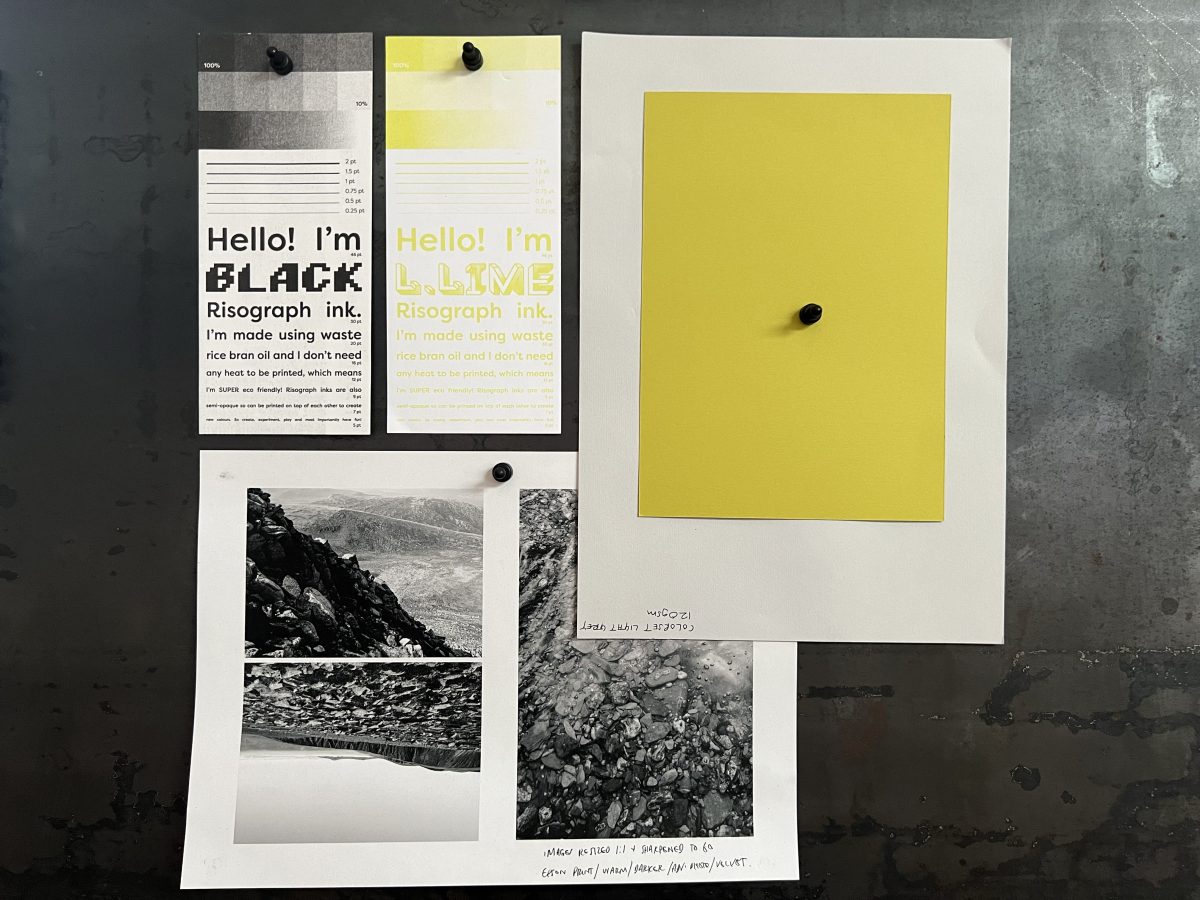
How did you think through your choices of paper, printing method, binding, packaging, number of books etc?
There is a conscious smallness to my publishing both in the physical size of the books and the edition sizes. I assemble and bind all of the books by hand, working with local materials and processes.
Printing: The cover and index pages (30% of the book) were Risograph printed in East London, a couple of miles from my home. The Risograph ink is made using waste rice bran oil and requires no heat and very low power for printing. The body of the book (70%) is inkjet printed on demand using an EcoTank printer in my home studio. These printers have tanks that can be refilled from bottles of water soluble dye-based ink, eliminating single-use plastic cartridges.
Paper: The book and print insert sizes were optimised to the paper sizes to minimise paper usage and waste through trimming. Approx. 70% of the book is printed on standard A4 and A3 paper that utilise the full sheet and require no trimming. The book uses three papers; Alga Carta, a paper made (10%) from toxic algae blooms in the lagoon of Venice (also chosen to reflect Algae as one of the partners in the lichen symbiosis); Colorset, made by Fenner from 100% recycled paper pulp; Colorplan, a paper responsibly made by the James Cropper Mill in the Lake District for GF Smith (UK). The paper for the insert prints varies, much like the paper substrates used in the lichen herbarium, and are drawn from my left over stock and samples, making each book unique.
Cover: The book covers are made from lichen paper sample packets used by the Lichen herbarium at the Natural History Museum. The cover packet’s function is to protect the book, as it would the lichen, and therefore it will wear and wrinkle.
Packaging: Recycled cardboard book wraps from Priory Direct. These wraps adjust to the size of the book to minimise the packaging size for transportation. The books are wrapped in bubble wrap and other packing materials reclaimed from studio deliveries.
Distribution: The book is sold via the manual.editions website and select book fairs. All of the books published by manual.editions are available to borrow from our online artist book library, as well as to view at public and university libraries. Libraries provide a system for sharing books, and an important alternative to ownership. The books can be borrowed within the UK for a week for £10 (including outward P&P). The books are affixed with a library label to track the adventures that they go on, and in some sense to act as an honesty system to encourage the borrower to return the book.
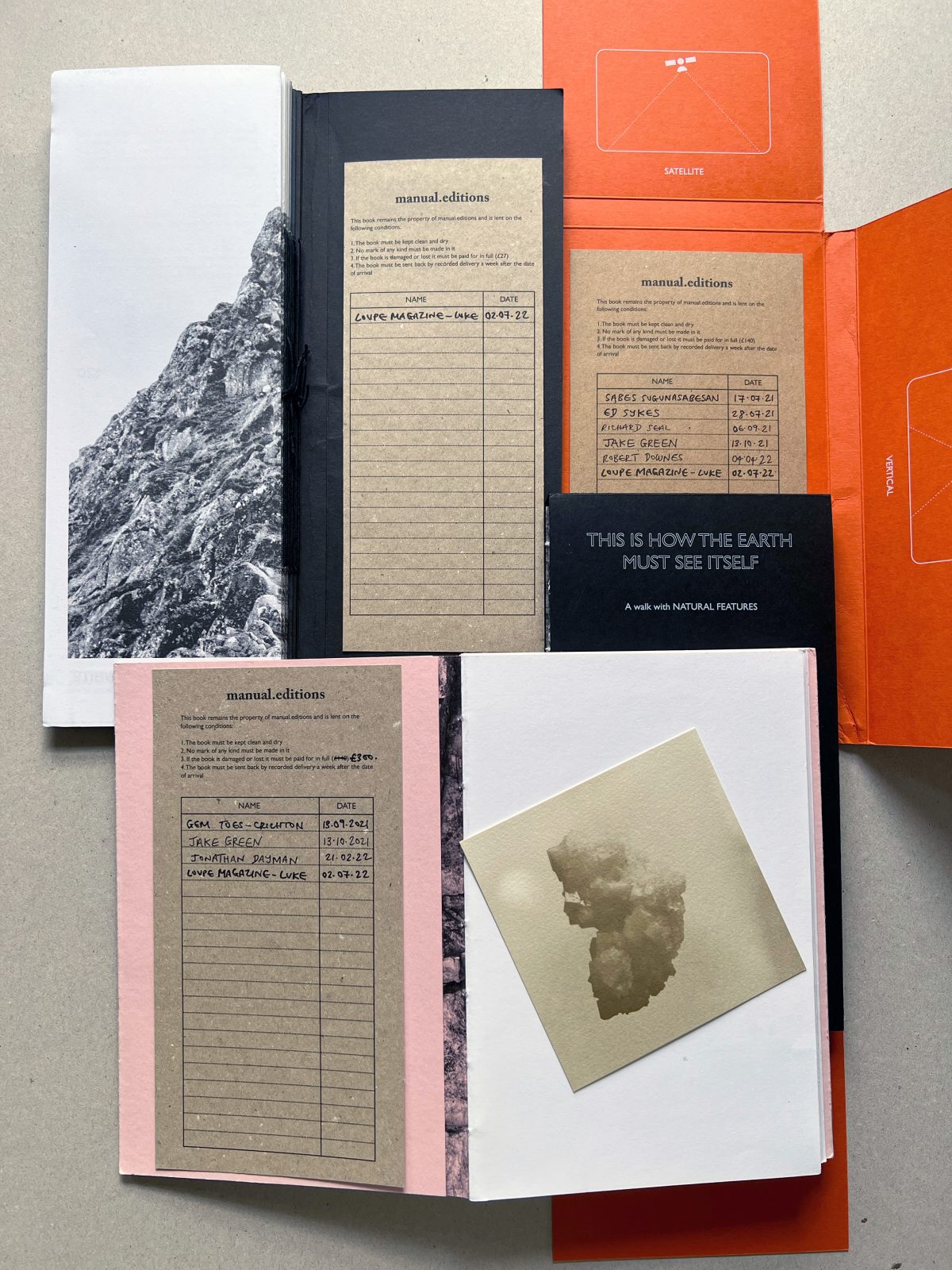
What challenges did you face, what questions were you asking, would you do anything differently next time?
The work was made in the UK; all travel was undertaken by train (approx. 2500 miles) and on foot (approx. 500 miles), whilst sleeping wild (approx. 30 nights). There were a couple of additional nights spent in local hostels when stomach bugs and gale force winds halted progress.
I had intended to print the books on demand, as they were ordered. The ink-jet printing process was more time-consuming and complicated than anticipated, with the paper needing to dry for at least 24 hours before it could be folded and bound. It became more realistic to print and assemble in batches of 5 to10 books.
Even though I was conscious about designing out waste, there were still offcuts from 30% of the paper sheets, and some left-over book covers and test prints. These by-products and left-over materials have since been reconfigured into new works.
Do you have any sustainability tips or inspirations (i.e. books, films, websites, podcasts) to share with others?
- How Bad are Bananas? by Mike Berners-Lee – for an introduction to carbon literacy
- Emergence Magazine – for inspiration on shifting ways of thinking and being in relationship to the living world
SPP network Resource List: https://www.manualeditions.com/resourcelist – for sustainability references and guides as well as suggestions on paper, printers and packaging etc for books
